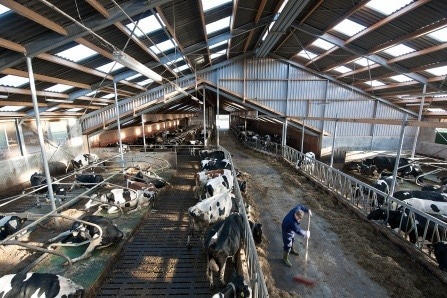According to University at Buffalo Researcher Holly Jean Buck, humanity is not on track to mitigate the most catastrophic effects of climate change.

Image Credit: University at Buffalo
Our plans are not adequate to meet the goal of limiting the earth’s temperature increase to no more than 1.5 ℃ by 2050.
Holly Jean Buck, Assistant Professor, Environment and Sustainability, University at Buffalo
Holly Jean Buck is the lead author of the study published in Nature Climate Change. Wim Carton, Ph.D., of Lund University in Sweden, Jens Friis Lund, Ph.D., of the University of Copenhagen in Denmark, and Nils Markusson, Ph.D., of Lancaster University in the United Kingdom are the other co-authors.
One barrier to obtaining net-zero greenhouse gas emissions is “residual emissions.” To limit the earth’s temperature increase, the United Nations’ panel of scientific advisors believes that the world must achieve net-zero greenhouse gas emissions this century. Greenhouse gas emissions are a major cause of the rise in temperature.
Residual emissions are those that persist after actions to minimize them have been undertaken. Even if every effort is made to eliminate all emissions, industries like agriculture and shipping are likely to continue emitting greenhouse gases into the atmosphere.
To achieve net-zero goals, residual emissions must be balanced by processes that remove carbon dioxide from the atmosphere—that is, any greenhouse gases entering the atmosphere must be countered by those being removed.
Immediate Steps to Take
Buck and colleagues suggest that achieving net-zero emissions requires a better knowledge of residual emissions. According to long-term strategies, the average level of residual emissions by 2050 will be 18% of current emissions—an amount that cannot be easily offset by carbon removal.
Researchers examined 50 countries' long-term low-emission programs and discovered that only 28 of them estimated the amount of residual emissions predicted by 2050. Buck and her co-workers have identified several steps they believe are required to address the problem because reducing residual emissions is key to accomplishing the objective.
The first step is to develop precise projections of residual emissions. The amount, source, and type of gas—carbon dioxide or other greenhouse gases—must be determined to establish effective mitigation techniques. Enhancing current carbon sinks, defined as anything that takes more carbon from the atmosphere than it releases, is one of these solutions. The ocean, forests, and soil are all naturally occurring carbon sinks.
We can enhance carbon sinks. We can plant trees, we can conserve land, we can engineer carbon removal, but it’s not enough to bring us to net-zero by 2050 with these projections of residual emissions.
Holly Jean Buck, Assistant Professor, Environment and Sustainability, University at Buffalo
Another issue concerning residual emissions is the strategy to net-zero: is it a temporary aim until further emission reductions, or is it intended to be a remedy needing permanent offsetting?
Some carbon-emitting activities, like aviation and shipping, are often regarded as extremely difficult to eliminate; other sources may be difficult to eliminate for economic and political reasons but are technically doable. Clarifying such concerns lays the framework for including residual emissions in programs to attain net zero emissions by 2050.
Why Net-Zero Matters
What happens if the objective is not met?
“More frequent floods. Devastating heat waves. Extreme economic damage from extreme weather. Agricultural production will be affected,” explains Buck.
While the study recognizes considerable barriers to reducing residual emissions, it also recognizes those barriers as opportunities for research and collaboration.
We hope to affect policy makers and non-government organizations that are working to achieve net zero. We can achieve it. I’m hopeful we will.
Holly Jean Buck, Assistant Professor, Environment and Sustainability, University at Buffalo
Journal Reference:
Buck, H. J., et al. (2023). Why residual emissions matter right now. Nature Climate Change, 13(4), 351–358. doi.org/10.1038/s41558-022-01592-2.